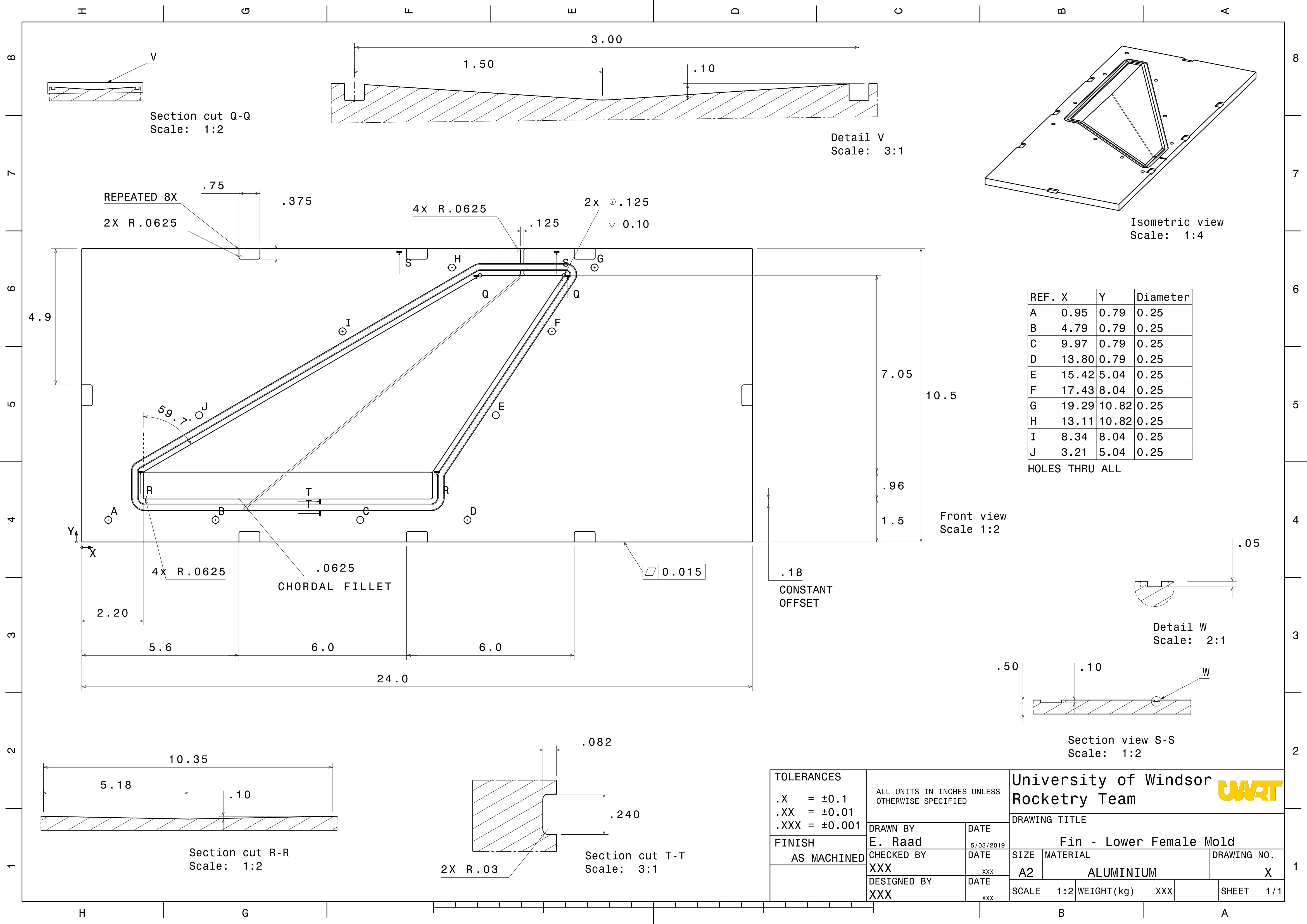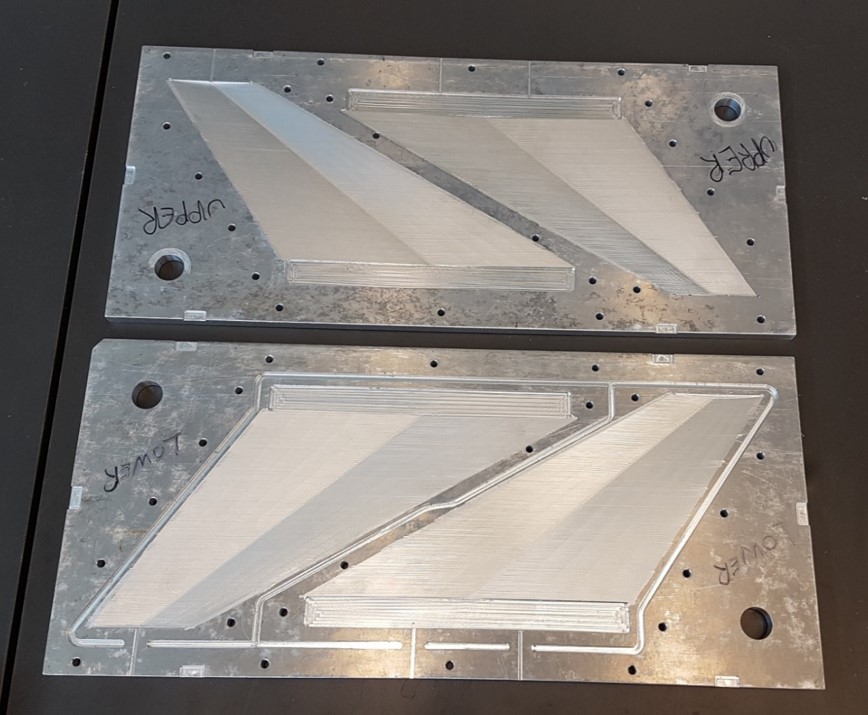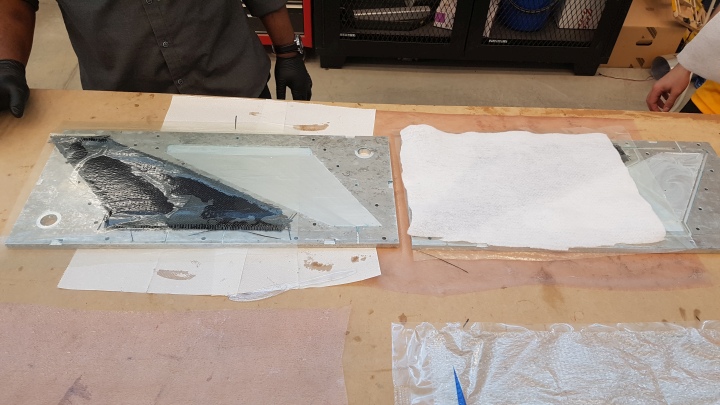As with all engineering projects, this one began with a technical drawing. A couple things we wanted for the build was reusability, ease of construction, and reproducibility. After plenty of testing (3D printing, foam, directly CNC’ing carbon fiber) we settled on creating an aluminium female mold. The design features:
- Built with CNC operations in mind. The fin-span is slightly oversized so that the sharp cut can be made on the waterjet instead
- Channel for an o-ring tube that stops resin from leaking outside the mold area
- Channels to direct excess resin through the top
- Alignment holes to position the top and bottom mold
Overall, the construction process takes two days, and results in two fins. Making four fins took a total of four days.
On the first day, the top and bottom halves of the diamond are made. Each half is made with four layers of carbon fiber. The halves are then vacuum sealed. The pressure pushes the material toward the mold and makes it stick to the contour defined by the aluminium. This process allows the diamond shape to be created.
On the second day, the halves are joined together. This is done by placing four more layers of carbon fiber on the bottom half, and then bolting the aluminium molds together. Any excess resin will seep out from the top, and should be cleaned up before allowing the entire mold to cure.
When the mold is fully cured, the two halves are seperated to show a less-than-perfect fin. The edges are trimmed using the waterjet cutter. This also ensures that each fin has the same planform dimensions. If any holes form between the top and bottom halves, they can be filled with a bit of expanding foam. Finally, the edges are slightly sanded down to produce a very sharp leading and trail edge.
Next, the fins are epoxied onto the rocket. A portion of the slit was cut on the boattail. The further back the fins can get on the rocket, the more stable it becomes. Before cutting, a laser tool was used to draw four equally spaced straight lines. Two wooden rigs are used to keep the fin alignment exact while the epoxy is curing.
Finally, two layers of tip-to-tip reinforcements are added. These last layers of carbon fiber stiffen the fins against flutter, which is a common problem at Mach speeds. We liked the natural black carbon fiber look so much, that we keep it for the final build.
Looks just like the drawings!










